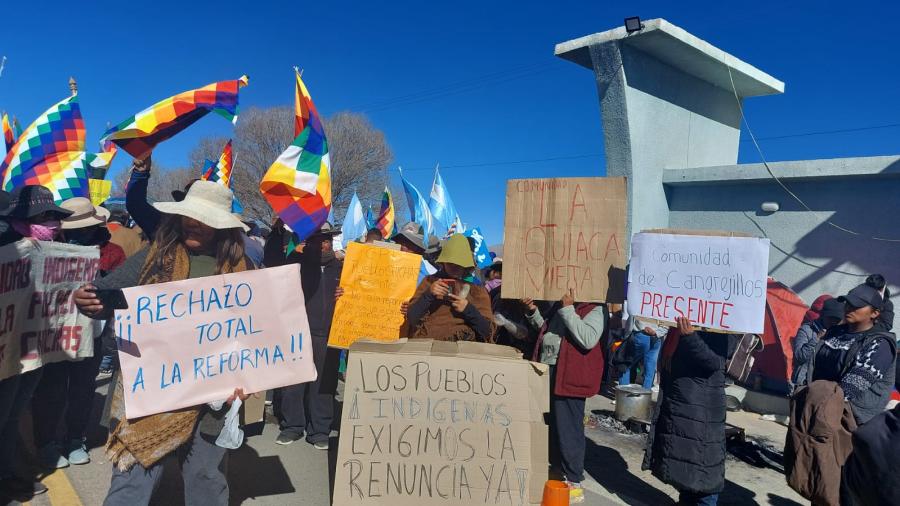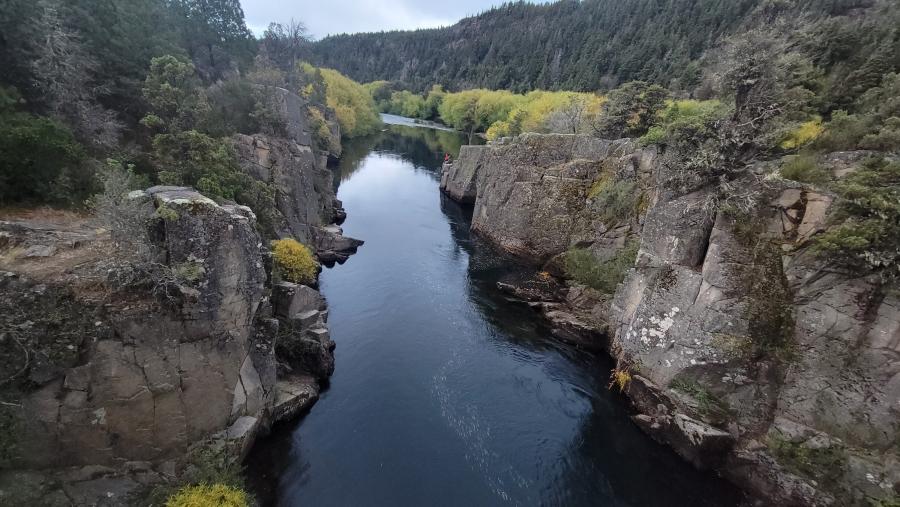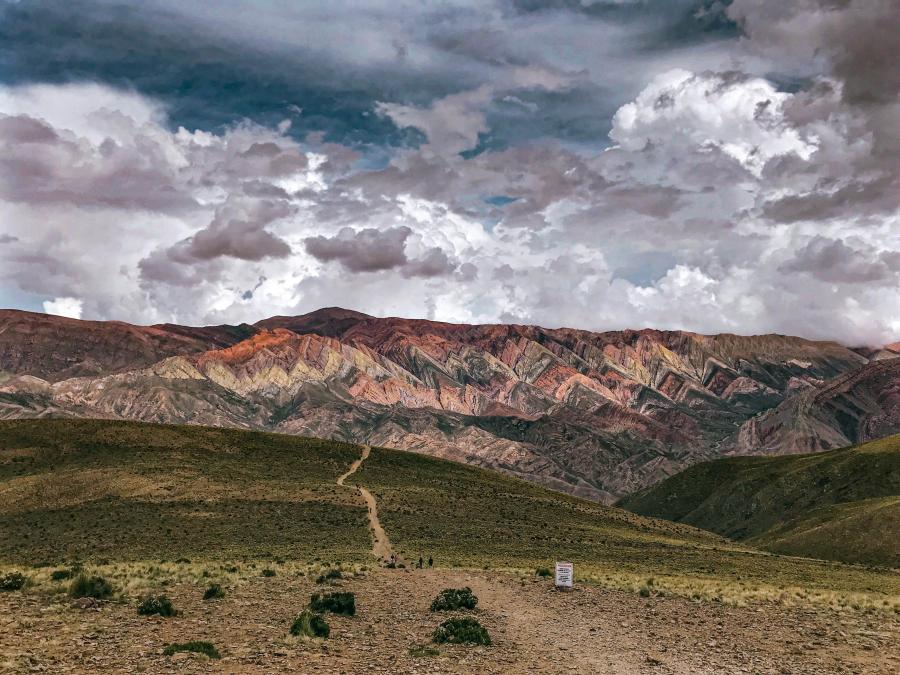Just 100 years after the first European settlement on Tierra del Fuego, the last Ona Indian died.
During the nineteenth century, the Yahgan and Ona peoples of Tierra del Fuego captured the attention of many Europeans. Charles Darwin, who visited the area, insisted that the inhabitants were the least civilized race on earth and, furthermore, that they were cannibals. Some individuals from each of these groups were taken to Buenos Aires and to Europe where they were exhibited in cages. Others were dressed in western clothes, taught English and introduced to British royalty and high society.
In Tierra del Fuego, "however, these peoples were disappearing. Between 1850 and 1910, the original population of some 6500 people had been reduced by 85 to 90%. The stories of the Ona and Yahgan are similar to those of hunting and gathering peoples throughout the world. The only differences are that their demise is better documented and that these groups experienced virtually every catastrophe that has beset similar groups throughout the world. Their cases, presented below, illustrate problems that continue to confront hunters and gatherers, indeed many small, tribal societies to this day.
The Setting
Before whites began to colonize Tierra del Fuego in the nineteenth century, the indigenous population and thousands of guanaco, a small deer-like animal, roamed the 17,000 square mile island. The northern half of the island was covered with grasses, ideal for the herds of guanaco. Dense forests gave way to mountains in the southwest. On the southern coast the mountains gave way to forests and, in a narrow strip along the shore, more natural grasslands.
The island's climate was described by an early settler as 65 unpleasant days per year along with 300 days of rain and storms.
The Yahgan
The Yahgan lived along the south coast of Tierra del Fuego and on the smaller islands to the south and west. Because of their location directly on the ocean, they were probably the first people contacted by European sailors, sometime in the sixteenth century. Over the centuries, contact intensified until the late nineteenth century when, according to one traveller, rarely a day that passed when a vessel wasn't within sight of Tierra del Fuego. During Captain Cook's first voyage (1768-1771) the inhabitants of the island already had a number of European goods - sail and woolen cloth, beads, nails, and glass which was used for arrow points - presumably obtained from the numerous shipwrecks in the area.
From 1850 onward, contact intensified. Ship captains traded alcohol and trinkets for pelts, and sealers and whalers hunted along the coast. At the same time the South American Mission Society (SAMS) began its attempts to work with the Yahgan, finally establishing a permanent mission at Ushuaia in 1869.
Yahgan and Ona Indigenous Population (by year, numerous sources)
Yahgan Ona
1850 3000 3500
1868 2500 3600
1872 2000
1884 1000
1890 300 2000
1900 800
1908 600
1912 175 300
1916 100 800
Between 1863 and I870, one author estimated that half of the Yahgan population died from epidemic diseases introduced to them by sailors and sealers and indirectly via the Alakalouf who live to the northwest and traded with Europeans. From the 1870s on the number of deaths surpassed the number of births. In addition to epidemic diseases, the Yahgan suffered from syphilis, suicide, internecine murders and "hysteria." Tuberculosis and measles were both common diseases in the 1880s.
A lack of food probably caused the Yahgan to be more susceptible to diseases. The seals that they hunted were depleted by sealers who wanted only their hides. The whales that beached and were eaten by the group were more occasional than before as their population, too, was depleted by whites.
Missionaries attempted to work with the Yahgan but there is little evidence that they helped them survive. After establishing a permanent mission on the southern coast of Tierra del Fuego in 1869, SAMS (Church of England) attempted to bring individuals to the mission to be educated and to work as laborers. Instruction lasted 2-3 hours per day. The rest of the time the men living at the mission were expected to cut timber, build fences and houses, construct roads and tend livestock and gardens. They were not paid wages. Instead they were given food for themselves - not their families - and sold western clothing which had been donated in Europe. Nor was the health of those at the mission better off than that of the Yahgan population at large. An observer wrote that between 1881 and 1895 every child in the mission village had died, whether in the orphanage or on Yaghan homes. Not one child in dozens born survived its first year.
Missionaries exploited every chance to denigrate the Yahgan's traditional way of life. In the 1870s, they told them that their impoverished state and declining numbers was proof of their bad habits. "If they did not change completely they would disappear completely." At one mission birthday party, an outsider described a game in which Yahgans and whites pretended to avenge the death of a man killed by Indians.
Missionaries introduced both sheep and cattle to Tierra del Fuego in the early 1870s. By 1886 when the mission was moved to another island (due to the decrease in the native population and the increased presence of the Argentine government), Yahgan owned only 70-80 head of cattle. Yet according to observers, the area was suited to livestock, in no small part because, as a result of missionary activity, the Yahgan could be trusted not to steal them.
The missionaries had had such success with their own herds that the leader of the group left the society at the time of the relocation. He travelled to Buenos Aires where he claimed,
My object in coming to Buenos Aires had been to obtain a grant of land in the Beagle Channel on which to create a farm, and employ native labor upon it, thus seeking to supply...agricultural products...and at the same time insure the well-being of some of the natives.
In 1886, Bridges was granted a ranch of 8 square leagues which included 24 miles of waterfront, all the land on the south coast of Tierra del Fuego worth farming and all of the land traditionally occupied by the Yahgan. He was given the land by the Argentine government on the assumption that he would use it to improve the condition of the Yahgan. Instead he set up his own ranch. By 1895 he had 4500 sheep on Gable Island alone and more on the mainland, large herds of cattle and horses and many pigs. His pastures were enclosed with fences and he had a large 2-story frame house, sheds and storehouses. He traded with both prospectors and Indians and his sheep yielded $1 gold per head per year and doubled in number every year.
Through his mission work with the Yaghan and the Ona, Bridges spoke their languages better than any other outsider. He established a Yahgan colony of workers on his ranch and no one was allowed to hunt or gather along the 24 mile coast without his permission. The workers did not receive a salary; in keeping with the missionary tradition, they received food that was produced on the ranch and clothing. In 1892, Bridges described the relationship as follows:
Since 1886 I have been settled with my family in Tierra del Fuego as a colonist among the natives and dependent chiefly on their labor, and we have done very well...We find the natives work well and happily when assured of adequate reward. They shear our sheep, make fences, saw out boards and planks of all kinds, work well with the pick and spade, are good boatmen and pleasant companions. We find their labor profitable, more so I think than we should find that of any imported labor.
The Ona
The Ona lived throughout the interior of Tierra del Fuego. They were contacted later than the Yahgan because they did not have boats or spend much of their time along the coast. They depended upon the guanaco as their main source of food, but supplemented it with ground rats, birds, stranded whales, fish, mussels, berries and mushrooms. The Ona did, however, have contact with other indigenous groups in the area, so the effects of western disease were felt long before sustained contact occurred.
In the 1870s and 1880s, however, whites began systematically to penetrate Ona territory. During this period, sheep herders in the north and south killed Ona ("Chunkies" as they called them) while gold miners and sealers shot them in the northeast and southeast of the island. In addition, the blubber of stranded whales was poisoned, and Ona women were captured and carried away. Such violent contact pushed the Ona away from the coast. By the early 1880s, ranchers paid bounties for dead Ona.
Initially, the Ona were able to evade their killers. As one visitor to the region reported,
One shepherd told me that often, when mounted on a first-class mustang, he had been obliged to chase an Ona (running on foot) five miles across the plain before he could get "within killing range of the thief," and even then the Indian was not unlikely to double or dodge and escape altogether.
Because Tierra del Fuego was divided between Argentina and Chile, troops from neither country wanted to risk an international incident by penetrating the other country. This, too, allowed some Ona to escape their hunters.
As sheep ranching and barbed wire spread, however, particularly on the northern half of the island, the Ona, and the guanaco which they depended on for food, were squeezed into the forest-covered southern half of the island. By 1885 animal life on the island was scarce. For decades, whites as well as indigenous inhabitants had been hunting for food. As the grazing territory of the guanaco was restricted and they were forced to live in forested areas, many died, especially in the winter, for lack of pasture. The Ona were also reduced in number as the restriction of their territory led to fierce competition between groups for limited food supplies.
By 1885, there were so many Ona being killed by whites that for the first time some came voluntarily to the SAMS mission and asked if they could live there.
The Argentine military had begun to send forays to capture Ona women and children. Those captured were then either sent to one of two Salesian missions or they were kept by the soldiers as servants and later taken to Buenos Aires.
By 1900, the Ona had been pushed into the timber-covered areas in the center/south of the island. The population increased slightly at this time, but this only put more strain on the area's limited food resources. By 1912, for example, residents estimated that there were only 300 guanaco left on the island. As Ona looked for food they came into increased contact with whites. Some Ona began to raid sheep again; many of them were shot, as herders increased the bounties paid to hunters for each Ona they killed. Others attempted to make peaceful contact and, as one observer put it, succumbed to drink and disease. In fact the missions where many Ona attempted to find peace, either SAMS or the Salesian missions, proved to be just as deadly as raiding sheep; few survived their time there.
By the first decade of this century, there were reportedly few Ona men over 30 who had not killed other Ona, presumably as a result of competition over food. Likewise, at least half of the adult males were reportedly scarred with from 1 to 3 arrow or bullet wounds.
Some whites were beginning to realize that the Ona might disappear. As Lahille wrote in 1896, "The Onas are destined to disappear shortly under the blows of three great plagues: alcoholism, tuberculosis and syphilis. In a few short years there will not longer be time to save them."
Charles Furlong believed that land could save the Ona. He wrote,
There is one dim hope for the Onas...The first step would be to set aside in perpetuity for the Onas' sole use at least the smaller and less desirable part of their birthright that has been taken from them - say all the territory of the island south of the line of 53°40'51" south latitude - with a mile wide neutral strip north of it. As occasion demands, their territory should be stocked with young guanaco…
But this was not to happen. By 1900 regular steamship traffic allowed the export of wool from Tierra del Fuego and with 20 years frozen mutton was shipped from the island. By 1904 a road had been built to connect Ushauaia and the north coast of Tierra del Fuego (and all the ranches in between). By 1909 there were three lumber camps employing hundreds of men to cut timber in the forest where the last Ona had been permitted to live without being in permanent contact with whites. As in the nineteenth century, assimilated Yahgan and Ona provided most of the labor for these enterprises. For example, the road that was built from the south to the north of the island was reported to have required the labor of 100 Indians for a year.
In a matter of 60 years, the Ona and Yahgan had been victims of successive waves of sailors, whalers, sealers, miners, missionaries, sheep herders, soldiers and lumbermen. Those who did not die as a result of contact with these outsiders had to work for others on what had once been their land. The Europeans incorporated the lands of these once self-sufficient hunters and gatherers into the world economy. By 1932, the island supported only one-third as many people as it had before the settlers arrived.
During the twentieth century the individuals that survived contact were left on their own to find accommodation with the colonists. In 1973, only 100 years after the first European settlement was established on Tierra del Fuego, the last full-blooded Ona died.
Article copyright Cultural Survival, Inc.



